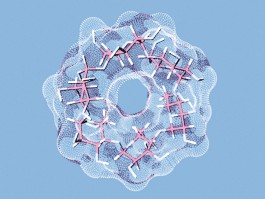Our system has noticed that you are based in , but the current country setting is . Do you still want to change your country?
- Home
- Products & Services
- Applications
- Pharma
- Auxiliaries
Excipients & Auxiliaries

WACKER’s CAVAMAX® cyclodextrins and CAVASOL® cyclodextrin derivatives are used both as formulation and processing aids in the pharmaceutical industry. L-cystine and L-cysteine find use as high-quality starting materials for pharmaceutical actives or as processing aids (redox agents) in the synthesis of active ingredients.
Cyclodextrins as Excipients
Cyclodextrins can serve to steadily release pharmaceutical actives in oral, dermal or parenteral applications. They increase the solubility and bioavailability of the actives in the body.
Cyclodextrins as Auxiliaries
In the fermentative production of water insoluble actives, cyclodextrins can be added to the culture medium and, via complexation, enhance the solubility of the actives, thus considerably increasing the yield. In addition, cyclodextrins can aid the absorption of important water-insoluble growth hormones, for example, via the cell membrane during cell culture fermentation, which also boosts active-ingredient production.
Product Recommendations
Sorry, no results are available for your filter criteria and selected country. Please contact one of our sales offices.
[] Suited, [] Well suited, [] Ideally suited
- Bioactive derivatives : L-cysteine is a starting material in the manufacture of derivatives. These derivatives can serve as valuable actives. Acetylcysteine, for example, liquefies mucus and thus serves as a therapeutic agent in cough syrup.
- Protein building block : in the pharmaceutical industry, L-cysteine serves as a building block for protein and peptide actives. It is also a component of amino-acid infusion solutions in parenteral nutrition.
- Microbiology and cell cultures : L-cysteine and L-cystine are essential nutrients for agar plates and culture solutions.
- Protein refolding : L-cysteine can be used as a processing aid for the production of proteins. In this function, the amino acid supports, for example, the manufacture of human insulin or antibody fragments by recombinant processes.
- Medical diagnostic s: L-cysteine is the amino acid of choice for many site-specific labeling experiments in the study of biomolecular structures and dynamics in proteins.
Product Recommendations
Sorry, no results are available for your filter criteria and selected country. Please contact one of our sales offices.





